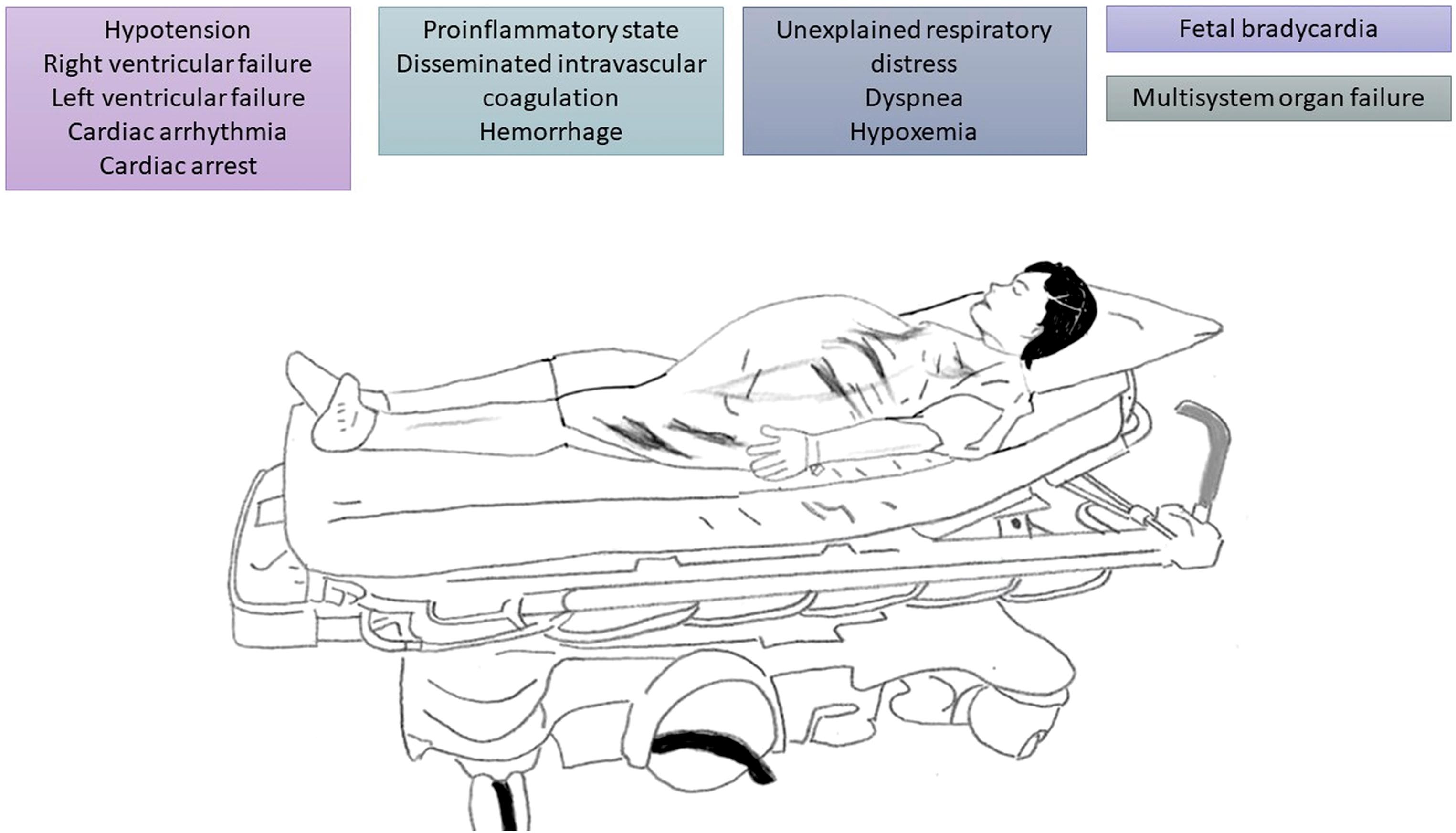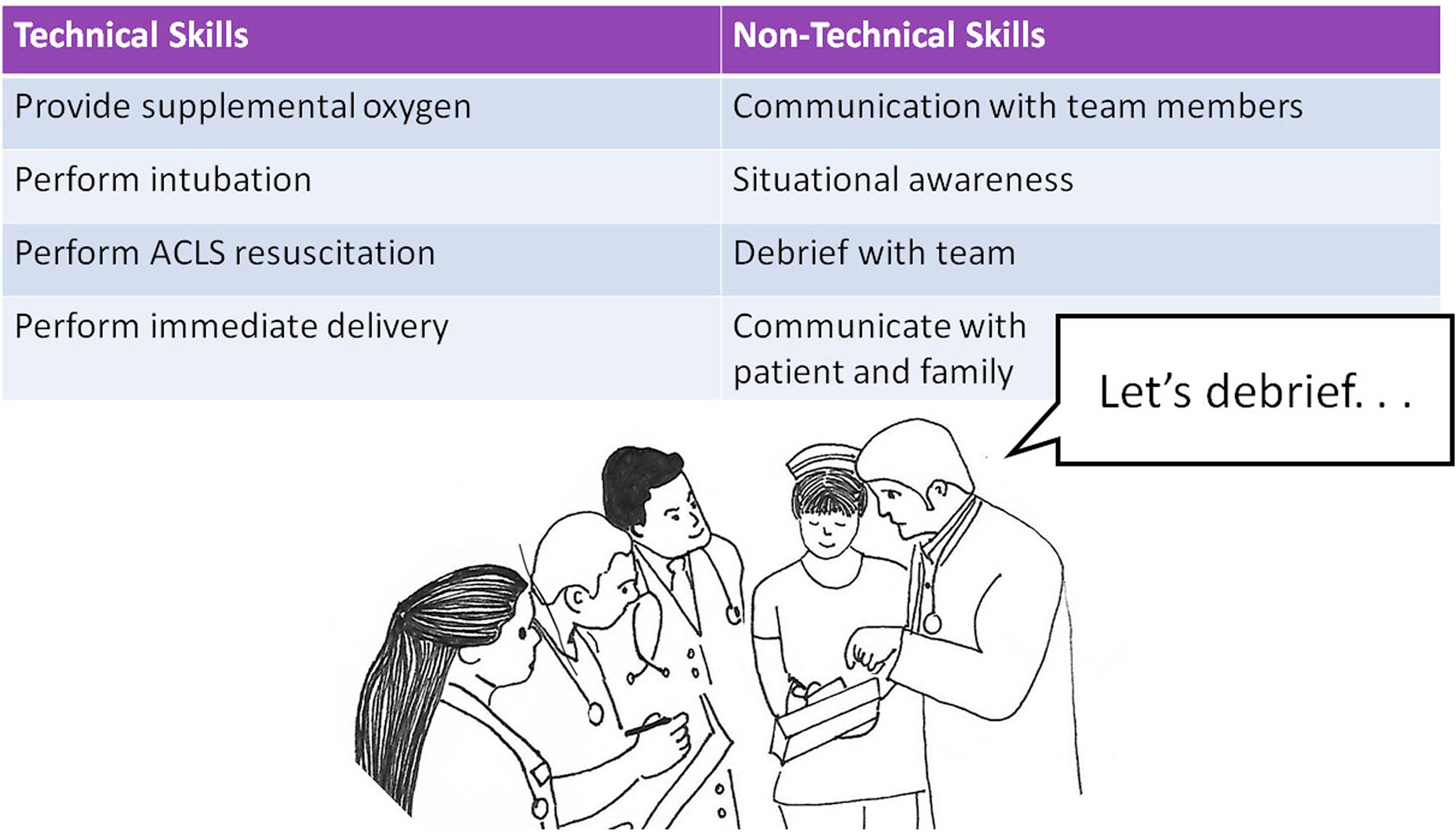Physical Address
304 North Cardinal St.
Dorchester Center, MA 02124
Describe the pathophysiology of amniotic fluid embolism.
List risk factors for amniotic fluid embolism.
Identify clinical presentation of amniotic fluid embolism.
Describe a management strategy for amniotic fluid embolism.
Amniotic fluid embolism is a fortunately rare obstetric emergency. However, if mothers are to survive this catastrophic event, clinicians must recognize it quickly and manage it very aggressively.
Amniotic fluid embolism occurs when there is enhanced communication between the amniotic cavity and maternal circulation. This allows amniotic fluid to enter the maternal circulation where it triggers a systemic inflammatory response ( Fig. 25.1 ). In the first hour, this typically presents as pulmonary hypertension and right ventricular failure. This is followed by left ventricular failure. The resultant hypotension and hypoxemia trigger multisystem organ failure. Concurrent activation of the coagulation cascade results in disseminated intravascular coagulation.


Multifetal gestation
Advanced maternal age
Operative delivery
Eclampsia
Polyhydramnios
Cervical laceration
Uterine rupture
Placenta previa
Amnioinfusion
Become a Clinical Tree membership for Full access and enjoy Unlimited articles
If you are a member. Log in here